
Darkling beetle is the common name for members of the beetle family Tenebrionidae, comprising over 20,000 species in a cosmopolitan distribution.

Cicindela, commonly known as common tiger beetles, are generally brightly colored and metallic beetles, often with some sort of patterning of ivory or cream-colored markings. They are most abundant and diverse in habitats very often near bodies of water with sandy or occasionally clay soils; they can be found along rivers, sea and lake shores, sand dunes, around dry lakebeds, on clay banks, or woodland paths.
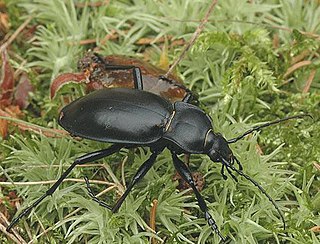
Carabus is a genus of beetles in family Carabidae. The genus is highly diverse with 94 subgenera, 959 species and 2300 subspecies, thus is the largest genus in the subfamily Carabinae. The vast majority are native to the Palearctic, but 16 Nearctic species are also known. Carabus spp. are 12–50 mm (0.47–1.97 in) long, and most species are wingless and often very colourful. These are nocturnal, predatory beetles that feed on snails, earthworms, and caterpillars. Most Carabus species were thought to have inhabited the Eurasian forest, but the species' low dispersal abilities altered the distribution of lineages within the genus.

Zabrus is a genus of ground beetles. They are, unusually for ground beetles, omnivores or even herbivores, and Zabrus tenebrioides can become a pest in cereal fields.

Melyridae are a family of beetles of the superfamily Cleroidea.

Cymindis is a genus of ground beetle native to the Palearctic, the Near East, and North Africa. It contains the following species:

Mylabris is a genus of beetles in the family Meloidae. It is endemic to the Palearctic realm. The species-rich genus Hycleus was historically confused with Mylabris and have their greatest diversity in the Afrotropics.
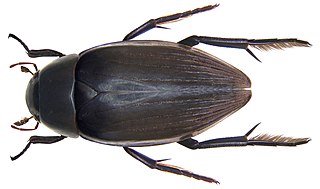
Hydrophilus is a genus of beetles in the family Hydrophilidae, the water scavenger beetles. There are 53 species in three subgenera in the genus: Hydrophilus, Dibolocelus, and Temnopterus.

Neomida is a genus of darkling beetles in the family Tenebrionidae. There are about 18 described species in Neomida.

Platydema is a genus of darkling beetles in the family Tenebrionidae. There are at least 60 described species in Platydema.

Helopini is a tribe of darkling beetles in the family Tenebrionidae. There are at least 50 genera in Helopini.

Ulomini is a tribe of darkling beetles in the family Tenebrionidae. There are more than 20 genera among Ulomini.

Diaperis is a genus of darkling beetle with species known from Asia, Europe, and the Americas. Some species were formerly placed in the genus Allophasia. A species described in this genus is now Serrania viridula.
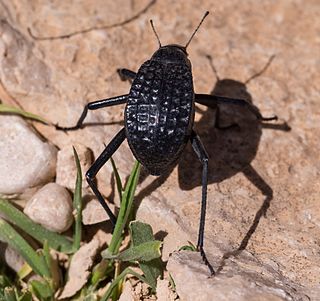
Adesmiini is a tribe of darkling beetles in the subfamily Pimeliinae of the family Tenebrionidae. There are about 11 genera in Adesmiini, found primarily in tropical Africa.

Pimeliini is a tribe of darkling beetles in the subfamily Pimeliinae of the family Tenebrionidae. There are more than 60 genera in Pimeliini, found primarily in the Palearctic.

Stenosini is a tribe of darkling beetles in the subfamily Pimeliinae of the family Tenebrionidae. There are more than 40 genera in Stenosini.

Tentyriini is a tribe of darkling beetles in the subfamily Pimeliinae of the family Tenebrionidae. There are more than 90 genera in Tentyriini.
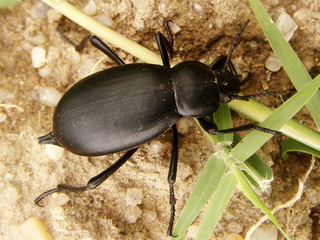
Blaptini is a tribe of darkling beetles in the family Tenebrionidae. There are more than 30 genera recognised in the tribe Blaptini.
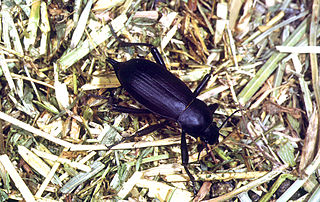
Blaps polychresta, commonly known as the Egyptian beetle, South African beetle or cellar beetle, is a species of beetle in the family Tenebrionidae. This species is a popular pet and can live up to 4-5 years. Although this species is introduced to Australia and America, it is not considered a pest, and is rather commonly found in chicken coops where the chickens feast on this species.




















